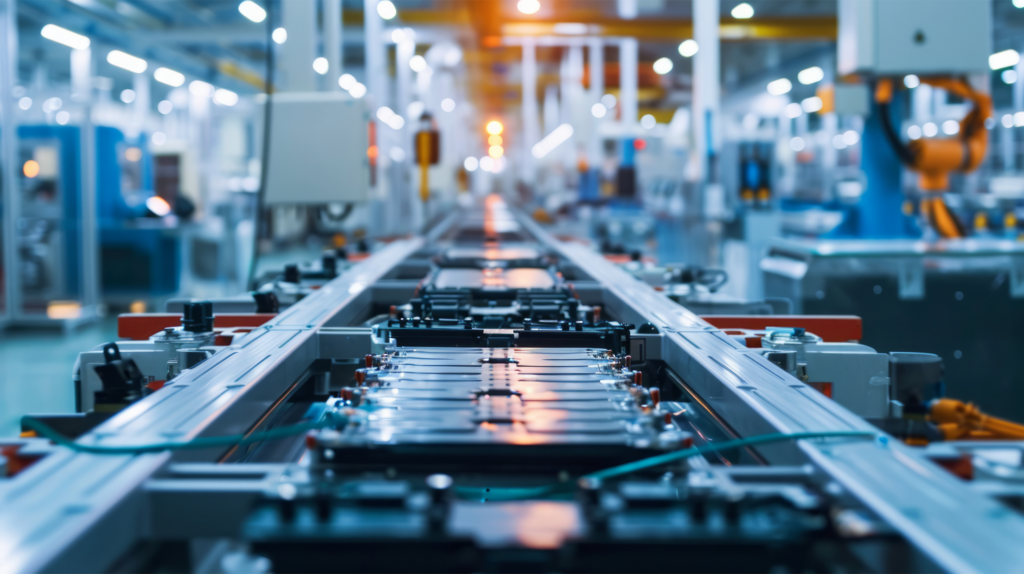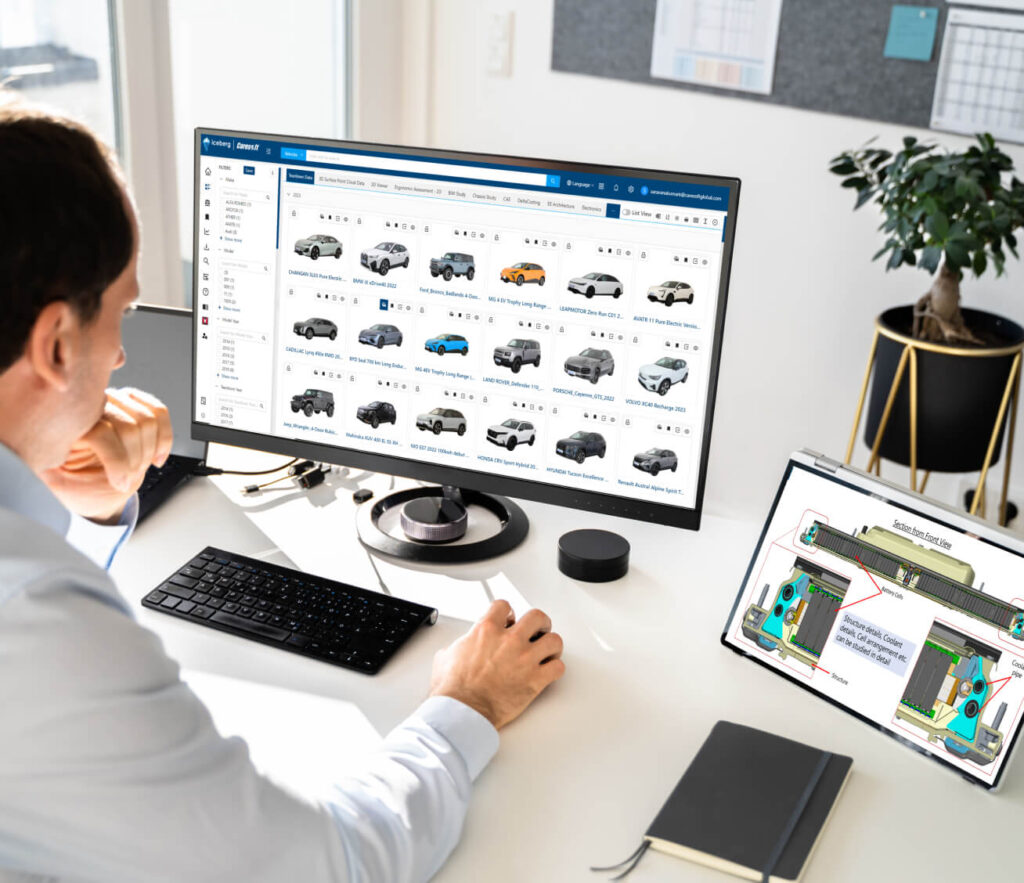The traditional assembly line is set to become a relic of the past. A new era in manufacturing the battery electric vehicles (BEV) is here, featuring the innovative unboxing method. Pioneered by Tesla, the unboxing methodology for EVs is behind new market entrants’ affordable price tag and astonishing market share.
Unboxing: A Radical Restructuring
For 100+ years, car manufacturing has relied on the approach pioneered by Henry Ford. This traditional method involves assembling vehicles on a conveyor belt, with different parts added sequentially.
The unboxed manufacturing process throws away the rulebook of conventional car assembly. The traditional approach relies on a separate Body-in-White (BIW) stage, where the car’s metal frame is assembled. However, the modular approach dismantles these siloed processes, eliminating the need for a dedicated BIW stage.
It deconstructs the car into smaller, prefabricated modules. Dedicated teams work concurrently on key vehicle components like the drivetrain, chassis, and interior. These prefabricated modules are then seamlessly integrated in the final assembly stage, eliminating the bottleneck created by a single, linear assembly line.

Modular EV Platforms and Flexibility
Modular EV platforms are the building blocks for electric vehicles, designed from the ground up for efficient manufacturing. This flexible approach allows automakers to swap components and create diverse vehicle styles on a single platform, reducing assembly complexity and costs per car. Modular EV platforms can be easily adapted to adjust production of specific drivetrains based on market demand.
Giga-Casting and Subframes
Taking a closer look, this method uses large, single castings for the car’s front and rear sections, essentially creating pre-made subframes. These subframes are then manufactured in independent modules before being brought together in the final assembly stage.
This paradigm shift moves away from the conventional Bill of Materials (BOM) used by legacy automakers and embraces a modular approach favoured by leading new EV manufacturers. This transition has the potential to revolutionise EV manufacturing, transforming it from a cost burden (cost centre) to a driver of profitability (cost leader).

Building Efficiency Block by Block
The modular approach of unboxing offers a multitude of advantages:
- Reduced complexity: Over 100 stamping and welding steps are eliminated, streamlining production and lowering costs. This also contributes to a lighter vehicle weight.
- Cost savings: Tesla estimates that the giga-casting and modular approach can lead to a 50% reduction in total production costs and a 40% decrease in factory footprint. By attaching the interior components (carpets, seats, etc.) to the battery pack before securing the sides, Tesla leverages robots for faster installation, further reducing labour costs and production time. This translates to significant savings for both Tesla and potentially other manufacturers who adopt this method.
- A more affordable EV: The cost reductions could pave the way for a more affordable electric vehicle, potentially priced around $25,000 USD. This aligns with Tesla’s plans for the Model 2 (Project Redwood), a compact SUV, making EVs more accessible to a wider range of consumers.
- Faster time to market: Gone are the days of waiting for a car body to inch down the assembly line before adding the next component. With multiple teams working on modules simultaneously, modular EV platforms have the potential to significantly reduce the time it takes to bring a new car model to market.
- Increased competition: If Tesla achieves its cost reduction goals, it could put pressure on other OEMs to adopt similar strategies or risk losing market share to Chinese BEV manufacturers, such as BYD and Xiaomi. The price drops could reignite consumer interest in electric vehicles and accelerate the shift away from internal combustion engine (ICE) vehicles.
- Shrinking footprint: Traditional factories resemble sprawling giants, with a single assembly line dominating the space. Unboxing allows for a more compact layout. Teams work on modules in designated areas, freeing up valuable factory floor space. This translates to significant cost savings on real estate.
- Enhanced agility: The modular design is inherently flexible. Imagine a car model with different engine options or interior configurations. With unboxing, only the specific module needs to be swapped out, allowing manufacturers to cater to diverse customer preferences without a complete overhaul of the production line.

Aligning with Industry Leaders
The unboxing approach is already gaining traction among new EV manufacturers, breaking down the vehicle into pre-fabricated sections. Improved processes and factory layouts reveal the potential of unboxed manufacturing techniques, including:
- Modular Assembly and Testing: Facilitates the optimisation of modular assembly and testing processes, leading to significant improvements in operator efficiency and factory space utilisation.
- Optimising Material Flow and Paint Usage: Helps uncover how factories streamline the flow of materials and paint during production, minimising waste and maximising efficiency.
Experiencing Next-Gen Design: An Immersive Exploration
The industry is constantly evolving. For that reason, we tear down around 35 new BEVs a year. Our global vehicle procurement team is busy bringing in the latest and most interesting cars for our team to take apart and analyse. The emphasis on modular architecture underscores the agility required in modern EV manufacturing.
Caresoft Global’s comprehensive benchmarking practices analyse the design evolution within leading new EV manufacturers. Presented through the lens of digital twins, this analysis showcases the historical shift towards modular design as a cornerstone of innovation in the EV industry.
Let’s Start a Conversation
By analysing the transformative power of modular design and cost leadership, Caresoft’s Iceberg 3.0 software provides valuable insights for understanding how to adopt the unboxed manufacturing process. To learn more, we invite you to get in touch now.
Disclaimer:
The content provided on this blog is for informational purposes only and should not be construed as professional advice. While we strive to ensure the accuracy of the information presented, Caresoft Global makes no warranties, either express or implied, about the completeness, reliability, or accuracy of the content on this blog. Some information may be outdated, obsolete, or inaccurate, and we strongly recommend that you independently verify any information before relying on it. Any action you take based on the information provided on this blog is strictly at your own risk. Caresoft Global will not be liable for any losses or damages in connection with the use of our blog. Links to third-party websites are provided for convenience and informational purposes only; they do not constitute an endorsement or approval by Caresoft Global of any products, services, or opinions of the corporation, organization, or individual.

